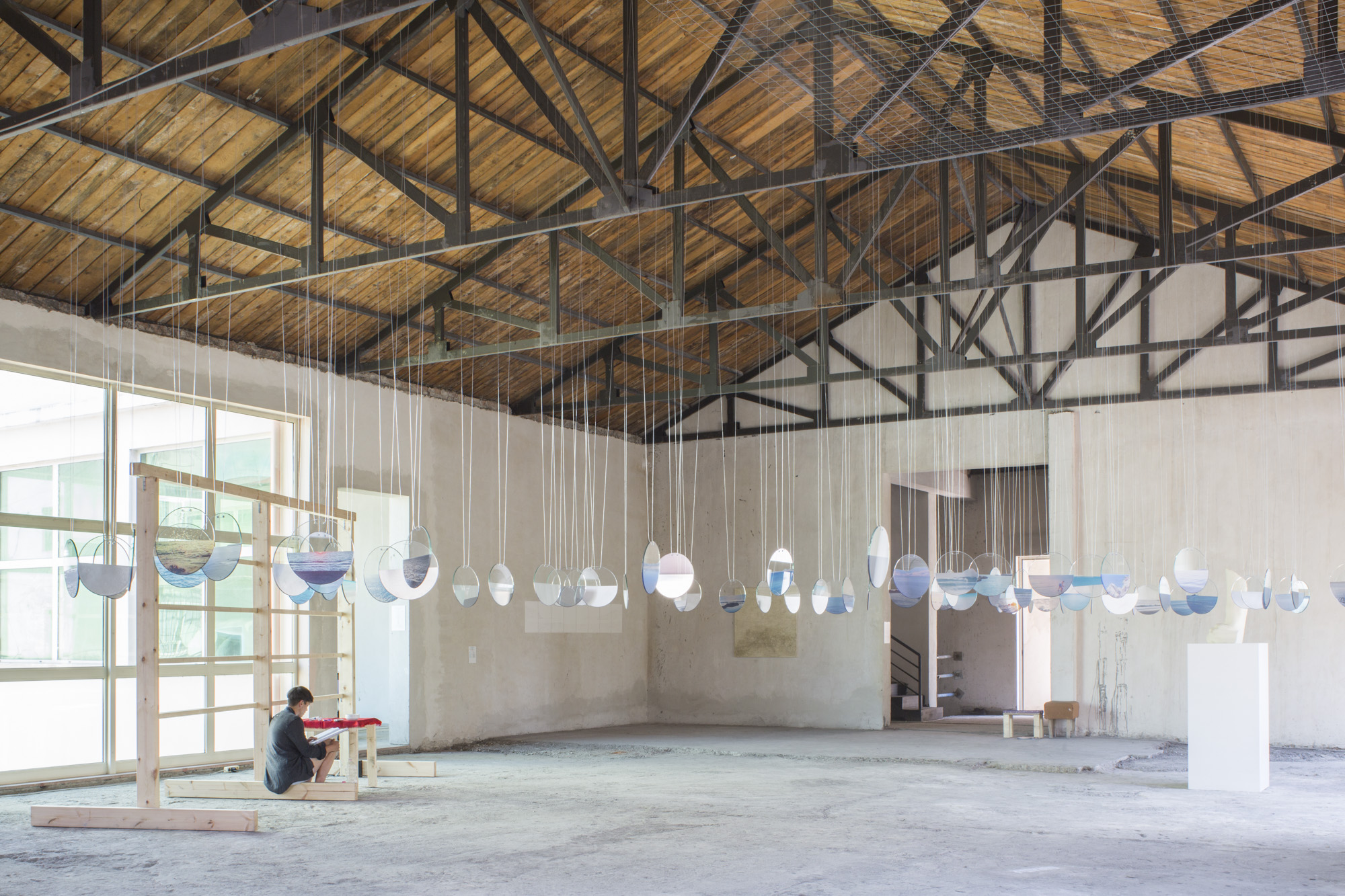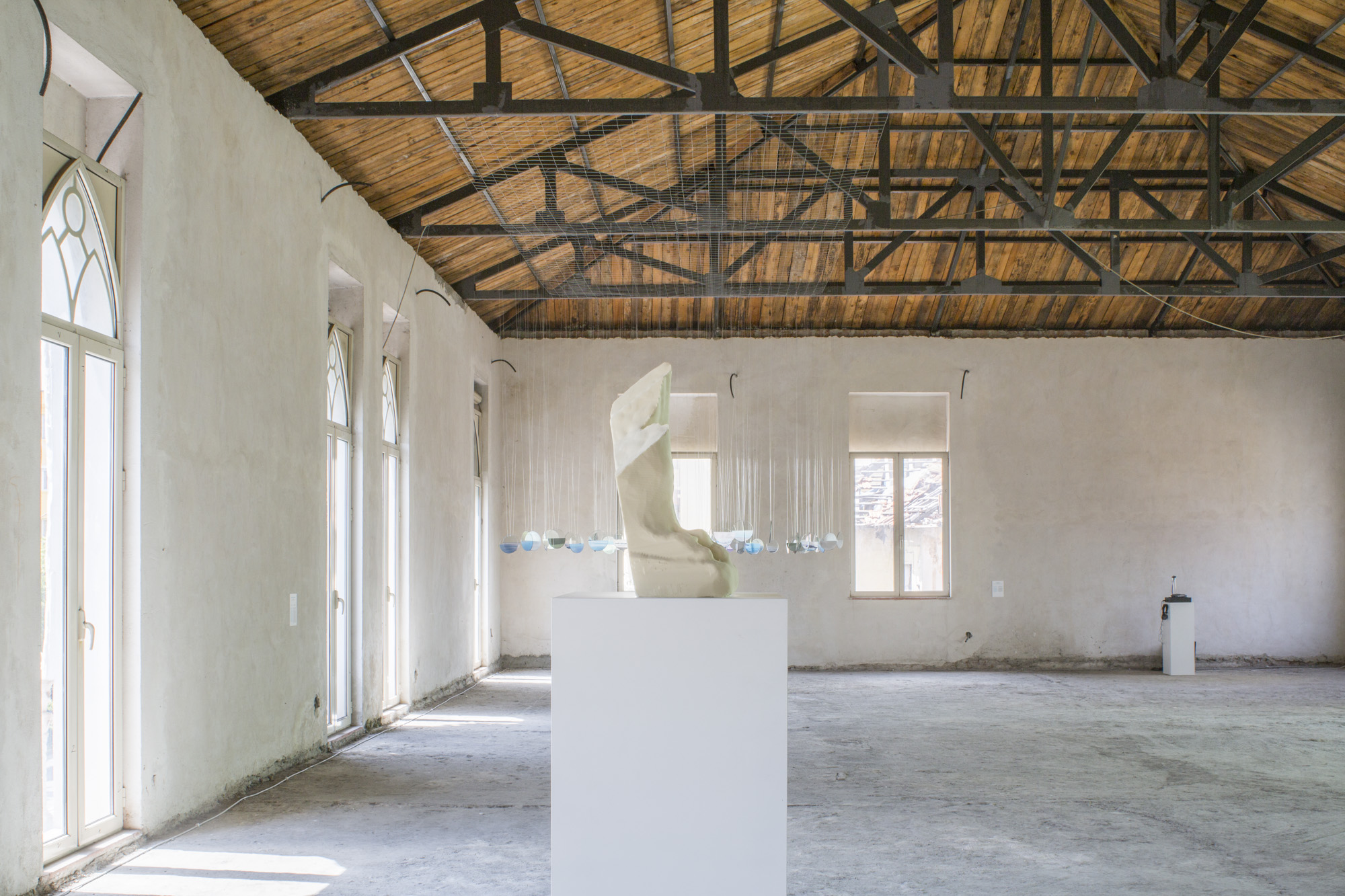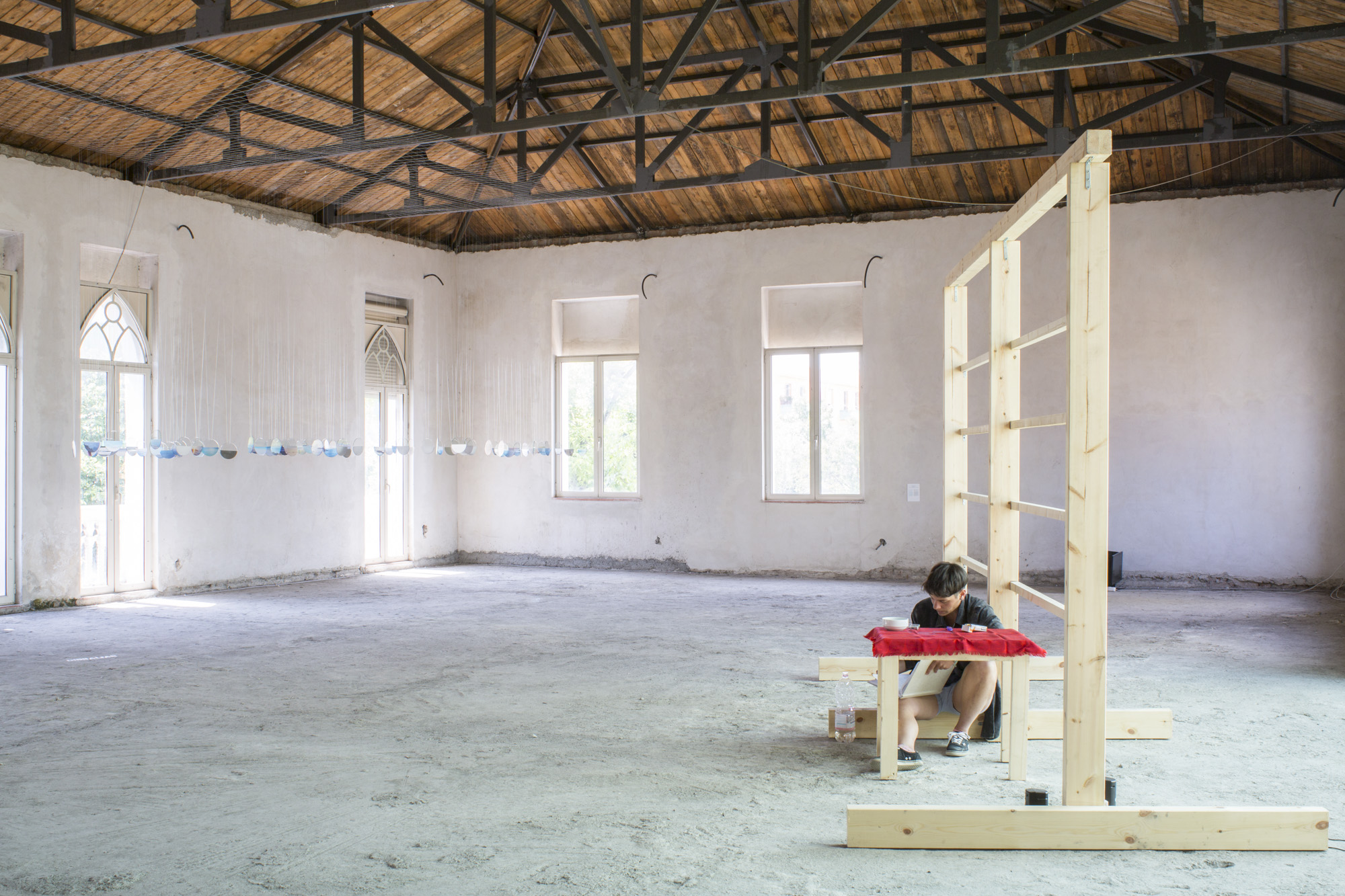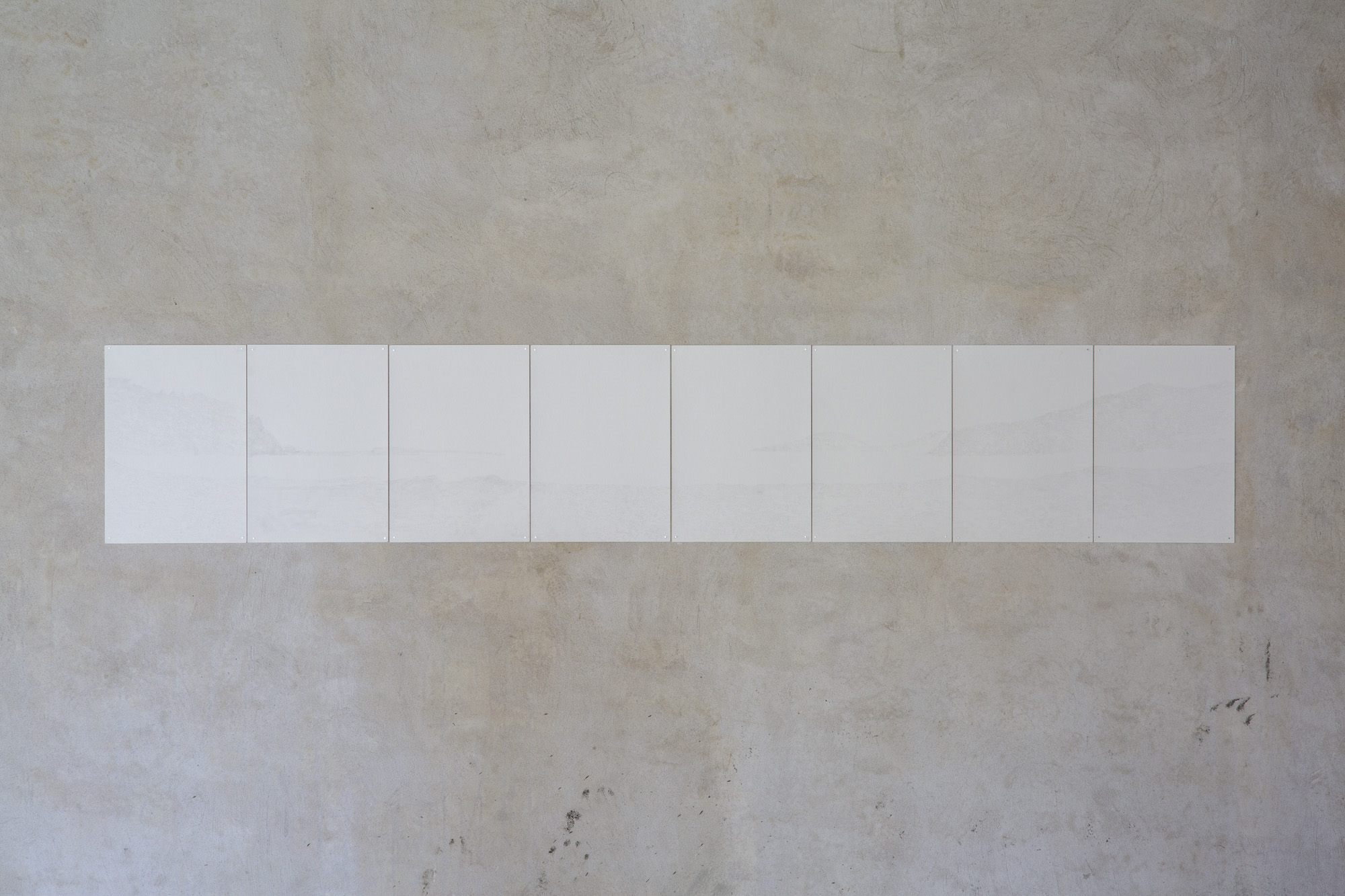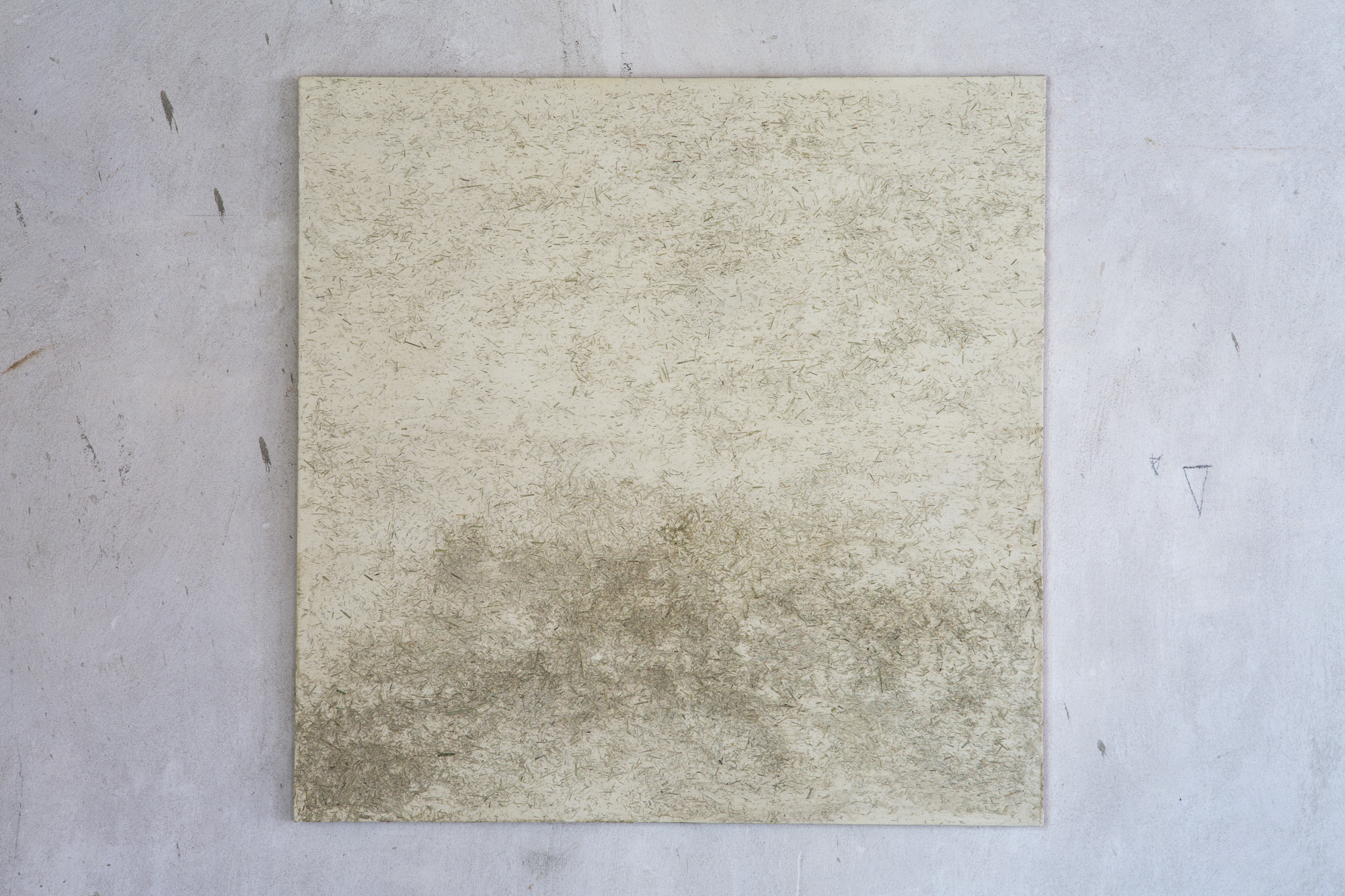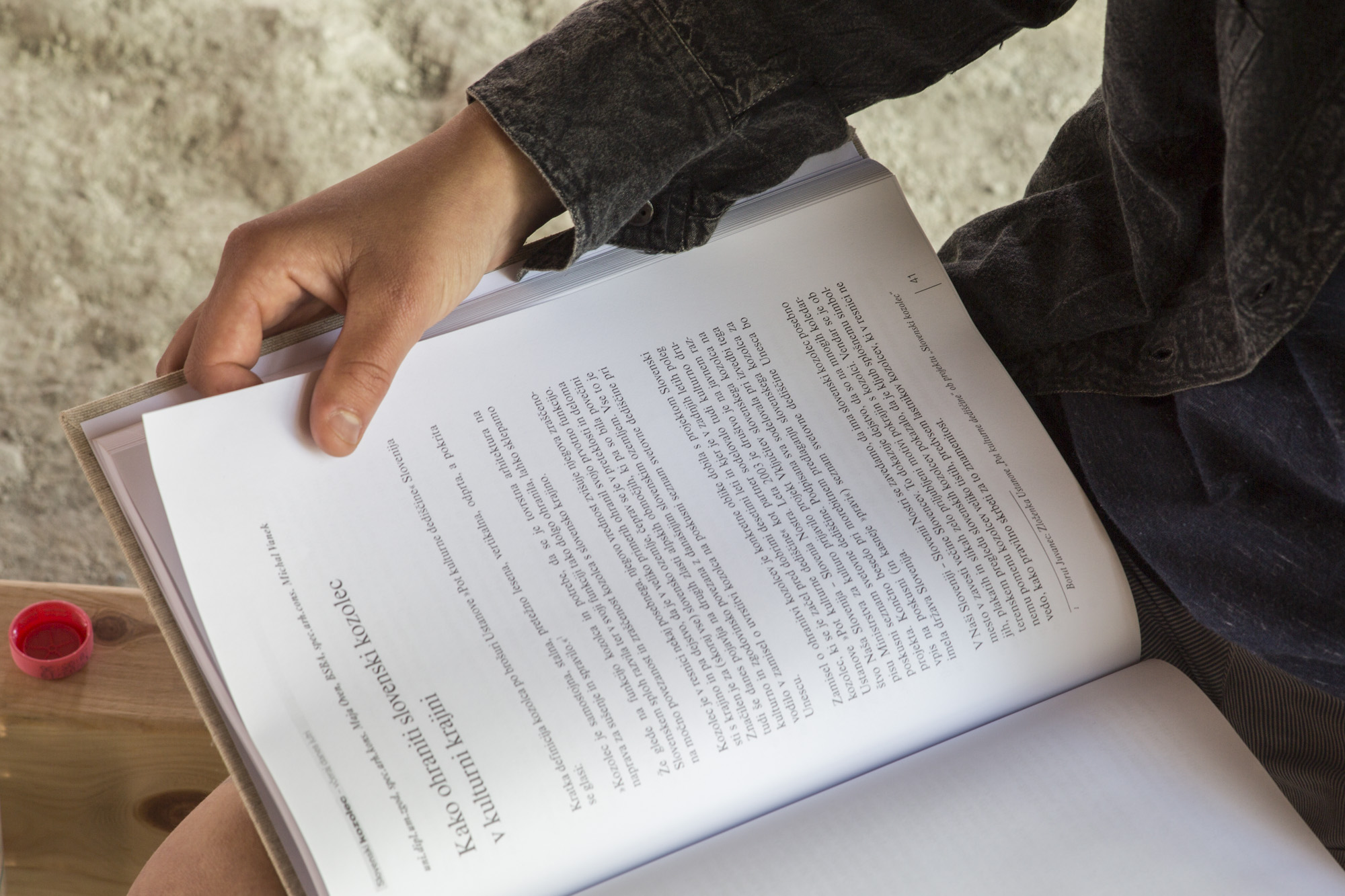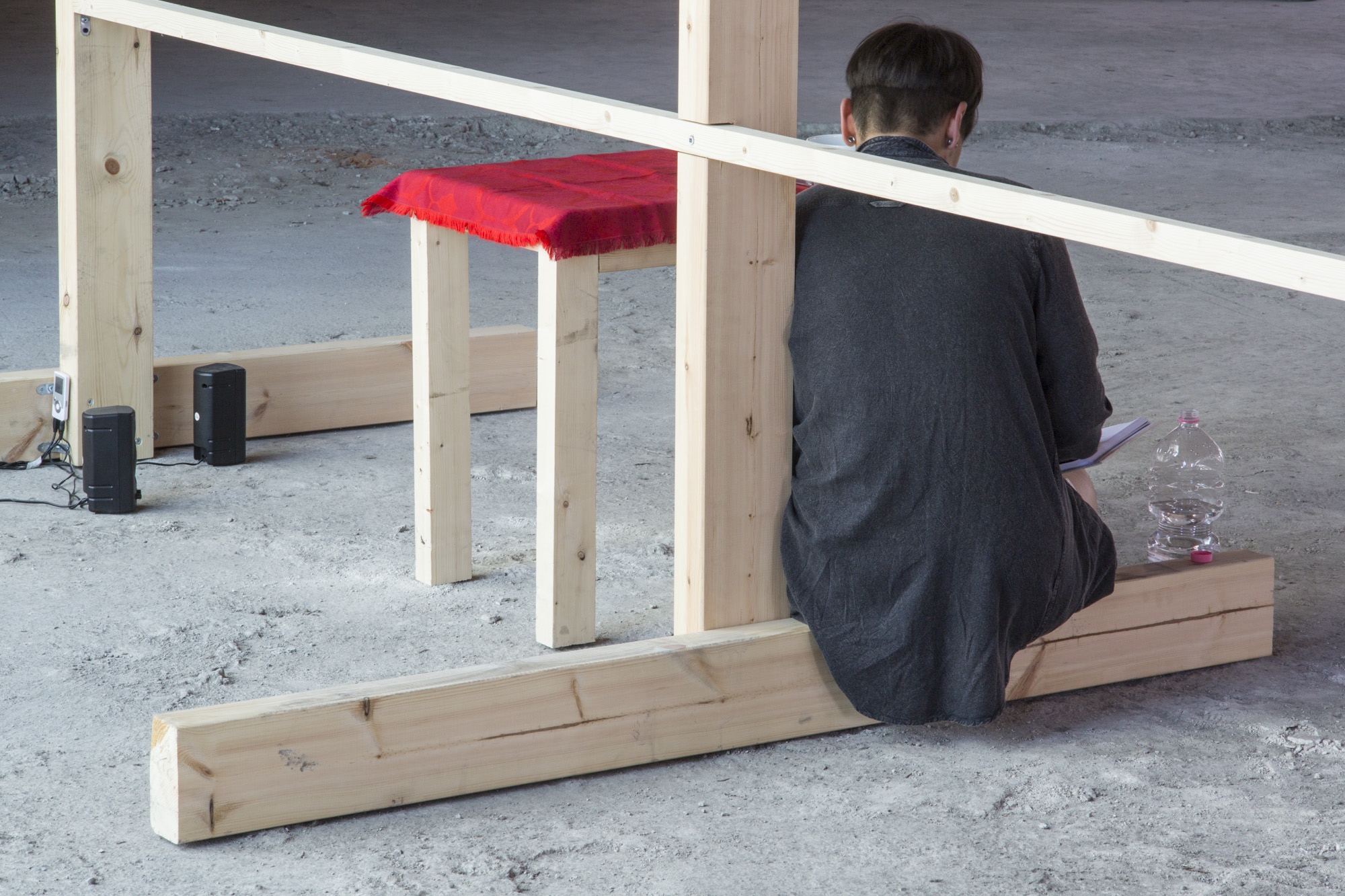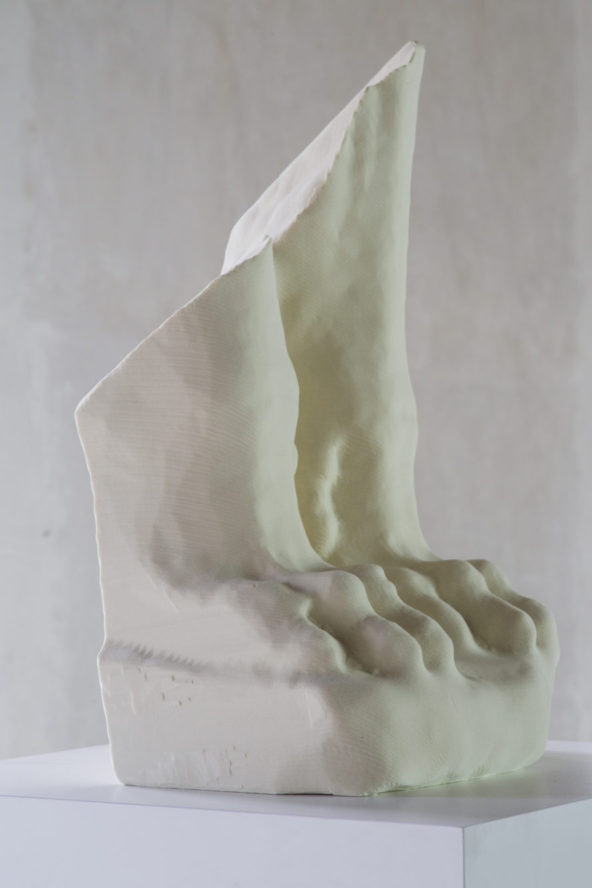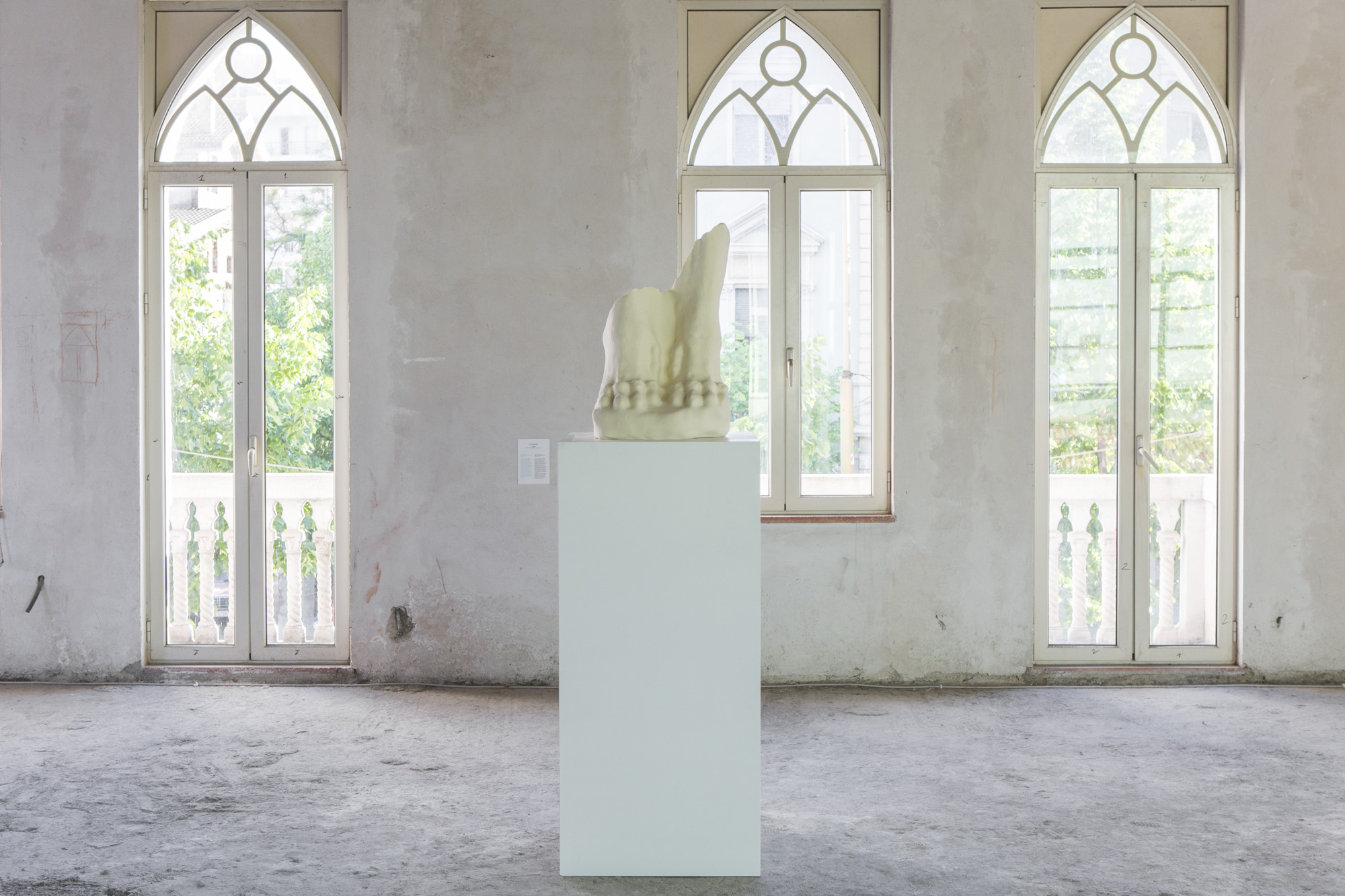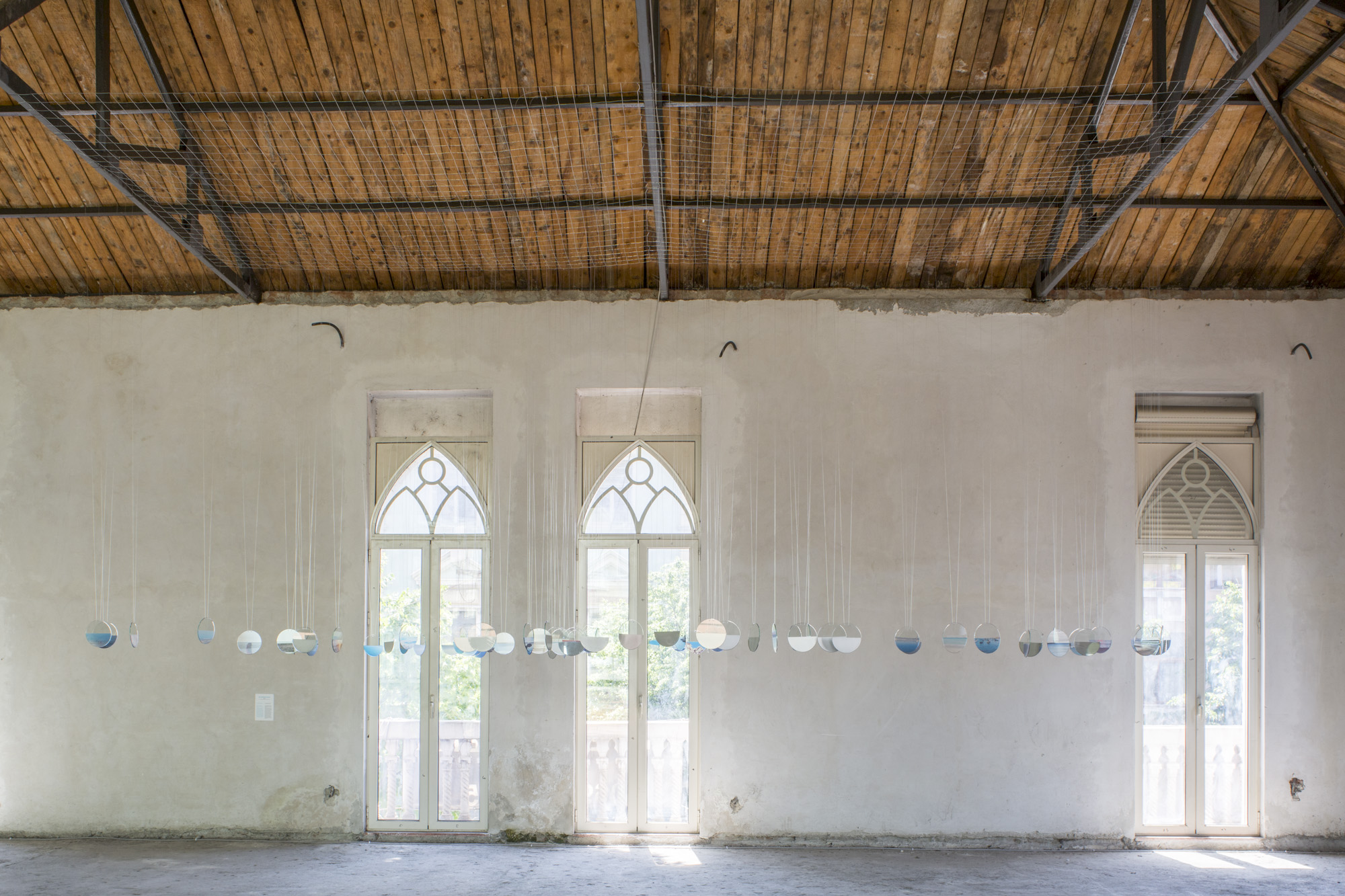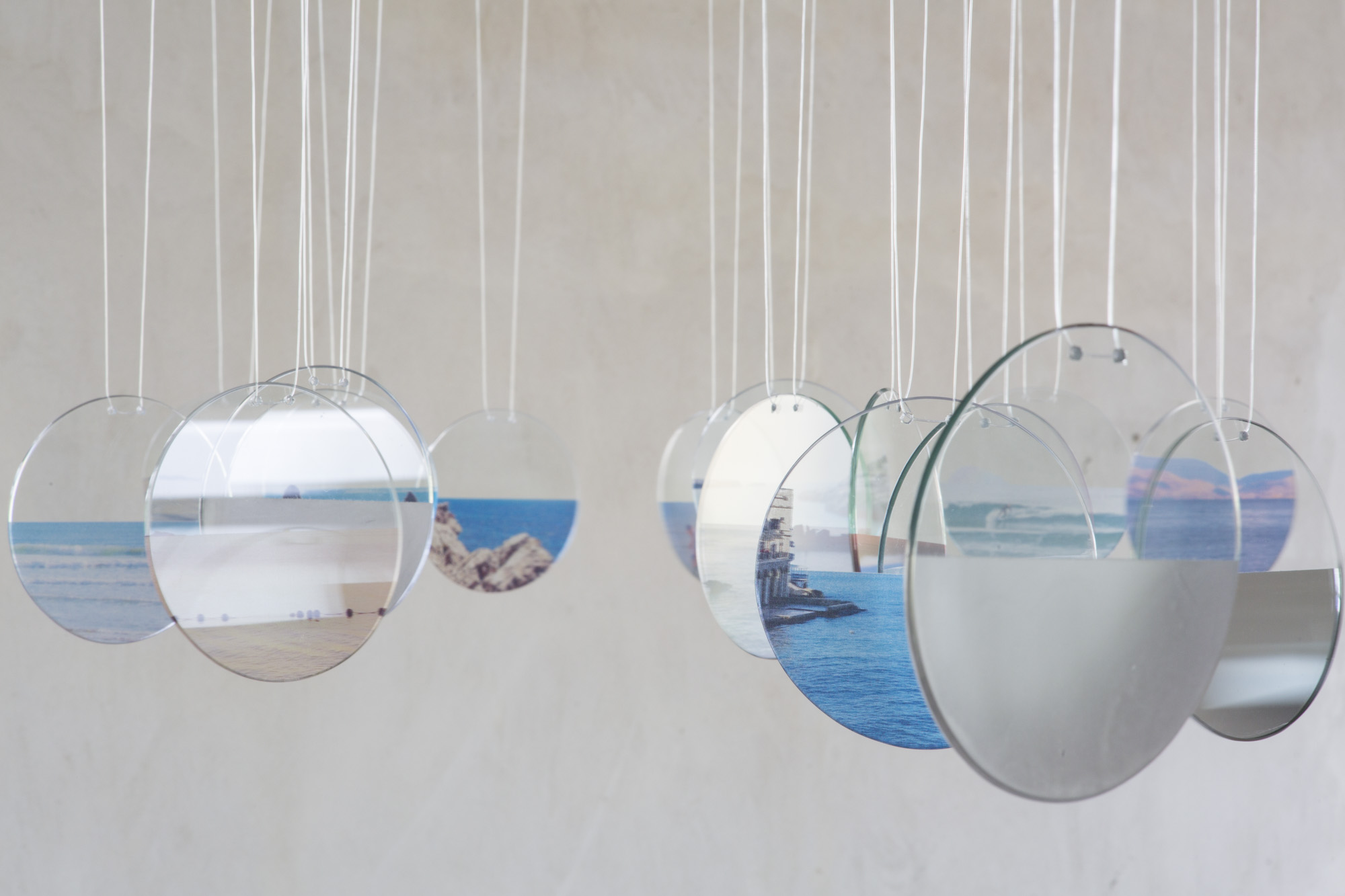How do Landscapes Shape Human Imagination?
Mediterranean landscapes is a traveling artist residency project that include ve artists, four curators (groups and individuals) and three different territorial areas. The residency itinerary has touched a Mediterranean minor geography, focusing on lateral areas rather than big cities. The territories of Tuscia and Tigullio and the city of Ljubljana were the three reference landscapes for artists coming from Italy, Belgium, Slovenia and Lebanon. Why deal with Mediterranean landscape issue from this perspective? The project is based on the belief that the landscape signi cantly changes with people movement, constantly rede ning itself with mutations of languages and ways of living.
To exit from the big cities and to conduct a research in the heart of the most mysterious gorges of Tuscia or in the Tigullio bunkers, has fundamentally been a new challenge for the artists, trying to re ect on the present traces of Mediterranean identities in these places. Mediterranean landscapes re ects just on the plural dimension of the Mediterranean landscape, in which you can still nd some constant elements that return in an obvious or subliminal way in di erent places. It should not be forgotten that, actually, it is impossible to determine the certain boundaries of the Mediterranean area since nowadays it is the focus of a radical recon guration process in politics and geography.
This totality of landscapes that during di erent stages of the residence became strati ed, has been the testing ground of the work of artists who, although invited to confront themselves with local suggestions, did not necessarily produce site-speci c works. The intention of the project was to start researches that united theoretical in- depth analysis and active practice of the landscape in this way combining or mixing the reality plane with the politics/geography plane. A process that did not re ect just on the small local reality in front of it, but that put this small local reality on a geographical and historical general plane with which communicate. For this reason, the artists have produced di erent re ections focused on a wide spectrum of issues related to the Mediterranean landscape: from a re ection on the symbolic role of Iraqi archaeological nds that have been destroyed by IS in the contemporary perception of The Mediterranean Sea (Ryts Monet) to the invisible networks that connect the di erent countries of the Mediterranean basin (Ieva Saudargaité) until the translation as a language and spatial process that at the same time betrays a reference linguistic landscape but also gives space to new possibilities of meaning through misunderstanding (Neza Knez). Starting from a re ection on the space of vision, Giulio Rossi realized a silver-point panorama of Sestri Levante gulf seen from inside a World War II bunker, while Chloé Despax investigated on slate as a ubiquitous versatile material of the Ligurian landscape, focusing on a sound mapping of public uses of this stone. A multiplicity of re ections and questions born from the founding question that has marked all the research work: How do landscapes shape human imagination?
Marco Trulli, La Ville Ouverte
THE LANDSCAPES, THE REPRESENTATION, THE GAZES
The gaze on the landscape is a very complex act because it is not only a physiological process but also a cultural process of which we do not have a complete control and whose nature is mysterious. Whether we are talking about Mediterranean area or not, the complexity of the gaze is definitely related to our world interpretation, everybody depends in fact on his/her own interpretation, in which there is a constant interplay of interpersonal and memory. According to the European Landscape Convention (Florence, 20th of October 2000) the landscape is the “part of the territory as it is perceived by populations”. When we look at the contemporary landscape, we are not observing just natural elements, but especially human elements: the landscape we observe is domesticated and anthropized, and in it there are infinite and by now indistinguishable boundaries between nature and artifice. The concept of landscape is born as a complete artifice, an idea of separation between the human and its outside. The landscape as a category has always been something different from us, something to describe and to divide into further categories. This strange term – landscape – recalls and takes us directly to that process of representation and memory that is simply the very foundation of an imagination. In the Mediterranean geographical area all this is even more evident, as over the past centuries the Mediterranean landscape has been a hyper-narrated landscape. We can say that the artists who worked for the Mediterranean Landscapes residency have precisely experienced around this interaction mechanism between the gaze of a subject and a material geographic reality, searching for the essence of how a landscape imagination emerges. The contemporary artist’s gaze on the landscape is not “domesticated”. The contemporary art practice knows how to overturn the act of gazing that is only apparently a simple physiological movement, but that is actually influenced by culture, references, and various regulated languages that exist inside us. For this traveling residency experience we have tried, along with artists, anthropologists, curators and inhabitants of the places, to make room for different symbols and usual meanings of the landscape, without claiming to necessarily make something new. The gaze changes, after all, even for humanity influenced through the ages by anthropologies, and so the representation of the landscape and the imagination change in the same way. Contemporary art is the expression of these imagination mutations. The contemporary works of art are very different from those that once were simple descriptions of the landscape, they are pure expressions of imaginations, where models and references are enigmatically overturned.
Hence the preciousness to make artists reflect on this, and give them a field of work that is continuously changing and is then pervaded by a certain vagueness, a field of work that only partially reveals itself. The creative and experimental paths that artists have covered in recent months are not an attempt to find a decisive answer, we wanted to begin and to end with a question (“How do landscapes shape human imagination?”), and our attempt was to cancel the certainties, in a continuous questioning of our respective gazes on the Mediterranean area and on the idea of the Mediterranean area, also during the project public meetings, to enable a redefinition process of contents, profiles and ways of looking. The landscape is an experience, and although you can try to find a balance between logic and feeling, between objectivity and subjectivity of perception, we were not interested in this kind of balance, but we rather wanted to explore and discuss this “open field” with the artists. Searching for a search, for the very meaning of landscape and imagination, and searching for the vague spirit of the places, without imposing nor opposing the particular characteristics of the place, but rather supporting the mysterious languages of the artists.
– Pelagica
MEDITERRANEAN GEO–GRAPHICS
Mediterranean Landscapes is a multilayered dialogue between artists, curators and inhabitants, an organism that creatively breathes and lives among internal exchanges and external stimuli. Starting from the meeting of cultural enterprises active both at national and international level, the project reaches out for a local dimension, made of very detailed speci c landscapes, before moving some steps back in order to gain perspective and create artworks that are indeed interpretations –sometimes intimate but always open – of liquid, politic, Mediterranean geographies.
Mediterranean Landscapes is a project triggered by the willingness to rethink the ordinary vision of the Mediterranean, a space with no borders that, day after day, resembles more the re ection of an idea rather than a concrete place. It is a project about living (in) a place, about Heidegger’s “making-room” philosophy, about the ”free giving of places” [Räumen ist Freigabe von Orten]. Mediterranean Landscapes involves meetings and exchanges, viewings and readings of the di erent Mediterranean geographies and identities, both those traditionally-settled and the travelling-nomadic ones. It is a mobile, itinerant experience that takes shape thanks to the gathering of two complementary sensitivities: the one that moves from the lands to the Arts (and must often be unraveled) and the one that, much more evidently, does tie artists to lands.
Mediterranean Landscapes is observing and translating the pluralities, the cultures and the diverse identities that emerge from the very same Mediterranean scenery. Being born from the question How do human imagination shape our landscapes?, the project very often leaves us wondering: How much and in which ways can landscapes shape our imagination?
Mediterranean Landscapes is a pathway that challenges the interacting locations, the selected artists and the living settlements involved while leading to its nal stage and synthesis: Mediterranea 18, a true moment of restitution and return where the map drawn by the di erent artworks produced takes shape and de nes another geography made up of discontinuities, passages, sounds, transparencies, illusions and visions.
Giuditta Nelli, La Ville Ouverte
CHLOÈ DESPAX
Born in 1984 in Toulouse, France. Lives and works between Belgium and Spain. Chloé Despax is a sound artist and radio producer, animator and musical programmer.
Ardesia, 2017
Ardesia is a physical, sensitive and poetic approach to the Mediterranean landscape. The spectator is invited to touch a slate, which through a sensor triggers soundscapes relative to the mineral recorded during the residency in Sestri Levante. Each visitor thus creates his own imaginary circulation and composition according to hand movements.
GIULIO ROSSI
Born in 1988, Massa, Italy. Lives and works in Turin, Italy.
Two Mirror Images, 2017
The Bunker is a starting point for questioning about landscape, as it is both a kind of structure hidden in it and an optical instrument to look at the landscape itself. A paradoxal point of view from which one Rossi has developed two mirror images: the first one is a landscape of the entire Tigullio area accomplished with a mineral (silver point) on paper and the second one is a portion of the inner wall of a bunker on canvas, obtained combining together an organic material (a plant) gesso and glue.
NEZA KNEZ
Born in 1990, Ljubliana, Slovenia. Lives and works in Ljubliana, Slovenia.
Under the hayrack, 2017
I ask myself when it comes to the point of collapse of the viewer/listener or when they start to think beyond the misunderstanding – then a discussion is opened on a different level. With thisverbal “non-sense“ i try to force the viewer/listener to think beyond the language and object. This triggers a reaction and a possible interest that directs participators in different reflections, which make sense. The intangible is related to different forms – illusions.
RYTS MONET
Born in 1982, Bari, Italy. Lives and works between Wien and Venice.
Black obelisk, 2017
For the exhibition Mediterranean Landscapes Ryts Monet decided to focus his research on the obelisk, a monument which is present in almost all the main squares in the European and Mediterranean capitals and an object with different political, historical and cultural meanings. In ancient Egypt the obelisk was a symbol of light from Aten, a petrified sun beam dedicated to the God of Sun Ra. Despite the obelisk embodied originally the religious and spiritual power, later it became a symbol of imperialism, present all over the world. In the contemporary landscape, the obelisk has become an odd and almost alien a remnant of an ancient civilization. The Black Obelisk in bitumen realized by the artist is meant to be related both to our past and our present, which are synthesized in a single element.
IEVA SAUDARGAITE DOUAIHI
Born in 1988, Taurage, Lithuania. Lives and works in Beirut, Lebanon.
0dy55ey, 2017
0dy55ey is a suspended scape of photographs of the Mediterranean Sea as seen from 78 different locations along its shores. The photographs were contributed by various people that the artist made contact with online via social media platforms such as Facebook and Instagram. Using the geo-tagging feature, the artist searched for people residing or visiting-in-realtime one of the 78 locations. These were determined by their roles as landing points for the submarine cable network that criss-crosses the seabed of the Mediterranean Sea. The photographs are printed on circular glass discs that are hung at eye-level and are dispersed in such a way as to recall their geographic locations as well as their relationships with other places/discs. Discs not carrying any photographs represent the locations from which the artist was not able to obtain photo contributions.
http://mediterraneabiennial.org/
All photographs © Pelagica
